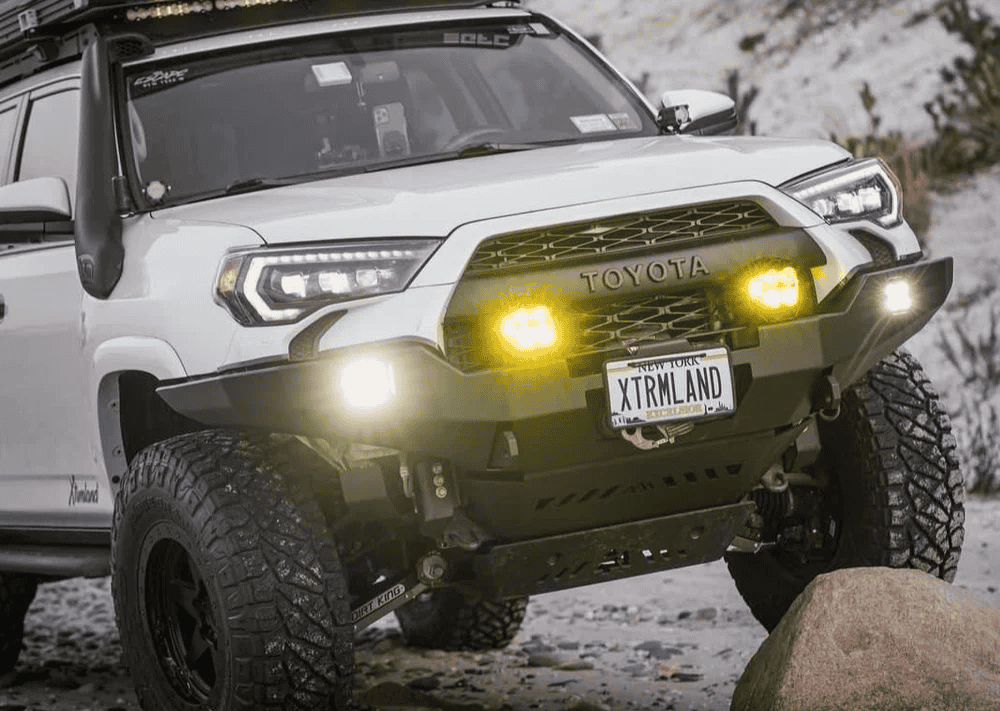Overland Vehicles

High clearance suspension design is more than stacking parts to sit taller. It is the process of lifting the lowest underbody points while preserving the relationships that make a vehicle steer, stop, and track straight. The big wins are better approach, breakover, and departure angles, but only when paired with correct alignment, steering angles, and driveline health.
A proper plan begins with the baseline. Map the lowest components like crossmembers, differential housings, tie rods, exhaust, and fuel tanks. Identify what truly limits clearance on centerline and along the path of the tires. From there, set a ride height target that balances center of gravity with the need to pass obstacles without constant contact.
Solid axles accept lift with relatively simple spring and link changes but need panhard and pinion angle correction to avoid side shift and vibration. Independent front suspension demands geometry friendly brackets, longer control arms, and steering knuckle solutions to prevent extreme ball joint and CV joint angles. Either way, clearance earned through correct geometry is worth more than height gained through shortcuts.
Springs and shocks do not just add lift; they manage weight and motion. Spring rates should reflect curb weight plus realistic load, not fantasy numbers. Shocks should control both compression and rebound to prevent wallow and harsh top out. Coilover or strut packages with travel matched to the new ride height are a smart foundation.
Big tires are the cheapest additional inch of ground height, but they also add unsprung mass and leverage. Proper wheel offset keeps scrub radius close to stock to protect steering feel and bearing life. Clearancing fenders and pinch seams is often less harmful than pushing wheels outward.
Cycle the suspension fully with the steering turned. Measure clearance at inner fenders, brake lines, sway links, and body mounts. Trim and reinforce as needed rather than rely on hard bump stops that steal articulation. Keep brake hose slack adequate for full droop without risking abrasion.
Aim for a sensible split between bump and droop. Too much bump travel invites hard contact with bump stops and overheats shocks. Too much droop can overextend ball joints and CVs. Use hydraulic bump stops or progressive jounce systems on heavier rigs to cushion hard hits while maintaining composure.
Once parts are installed, validation is non negotiable. Perform an alignment with targets set for lifted geometry, not stock numbers. Inspect driveshaft angles and U joint or CV joint phasing. Address vibration through adjustable links, corrected brackets, or double cardan solutions where appropriate.
Brake performance must match added tire diameter and weight. Fresh pads with a higher friction rating, stainless braided lines, and if needed rotor upgrades preserve stopping distance. Recalibrate speedometer and driver aids when available so stability control and ABS behave predictably.
Monitor rear pinion angle in relation to transfer case or transmission output. Maintain proper operating windows to prevent heat and wear. For independent setups, confirm CV boot clearance at full lock under compression to avoid tearing in rough terrain.
Write down caster, camber, and toe targets that match the new setup. Recheck torque and alignment after the first few hundred miles since springs settle and joints bed in. Keep tire pressures appropriate for the new load to reduce cupping and feathering.
If you want a suspension plan that clears obstacles without turning daily driving into a chore, our team can help translate these principles into a specific blueprint. We design and install geometry friendly lifts, corrected steering, and travel matched shock systems for vans and overland trucks in Fayetteville, Arkansas. Explore our overland rigs to see how we approach real terrain, real loads, and real reliability. When you are ready to shape a build path, review our custom overland upfit options and see why choose OZK Customs resonates with serious travelers.
We start by listening, then we measure, model, and test. Your rig leaves with a balanced stance, corrected geometry, and a clear walkthrough at Adventure Point so you know exactly how to use it off grid and on pavement. Bring us your goals and we will turn them into a confident, high clearance ride.
Ready to gain clearance without sacrificing on road manners or component life? Talk with OZK Customs about a geometry first suspension plan that fits your van or truck, your terrain, and your timeline. Book a consult and get a road tested design, professional installation, and a guided handoff at Adventure Point.
ADDRESS:
6159 E Huntsville Rd, Fayetteville, AR 72701
PHONE:
(479) 326-9200
EMAIL:
info@ozkvans.com